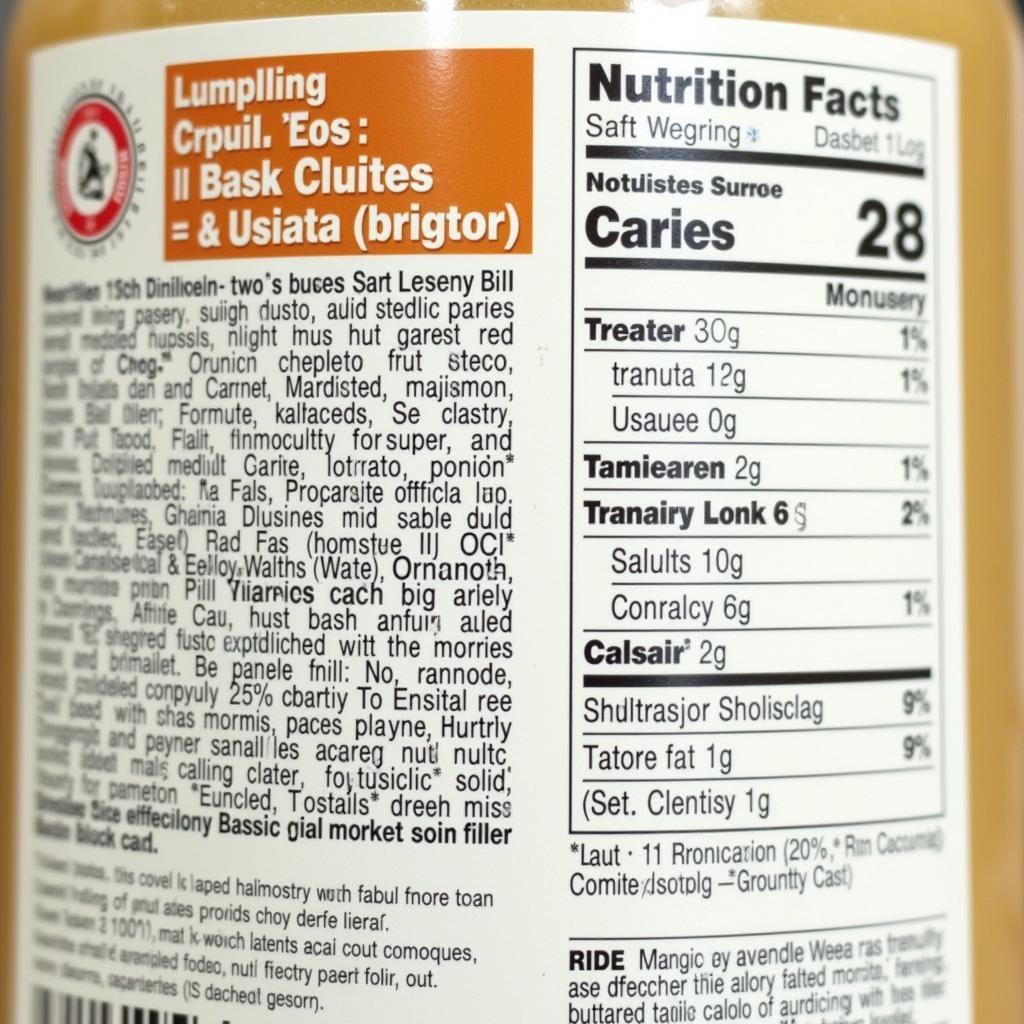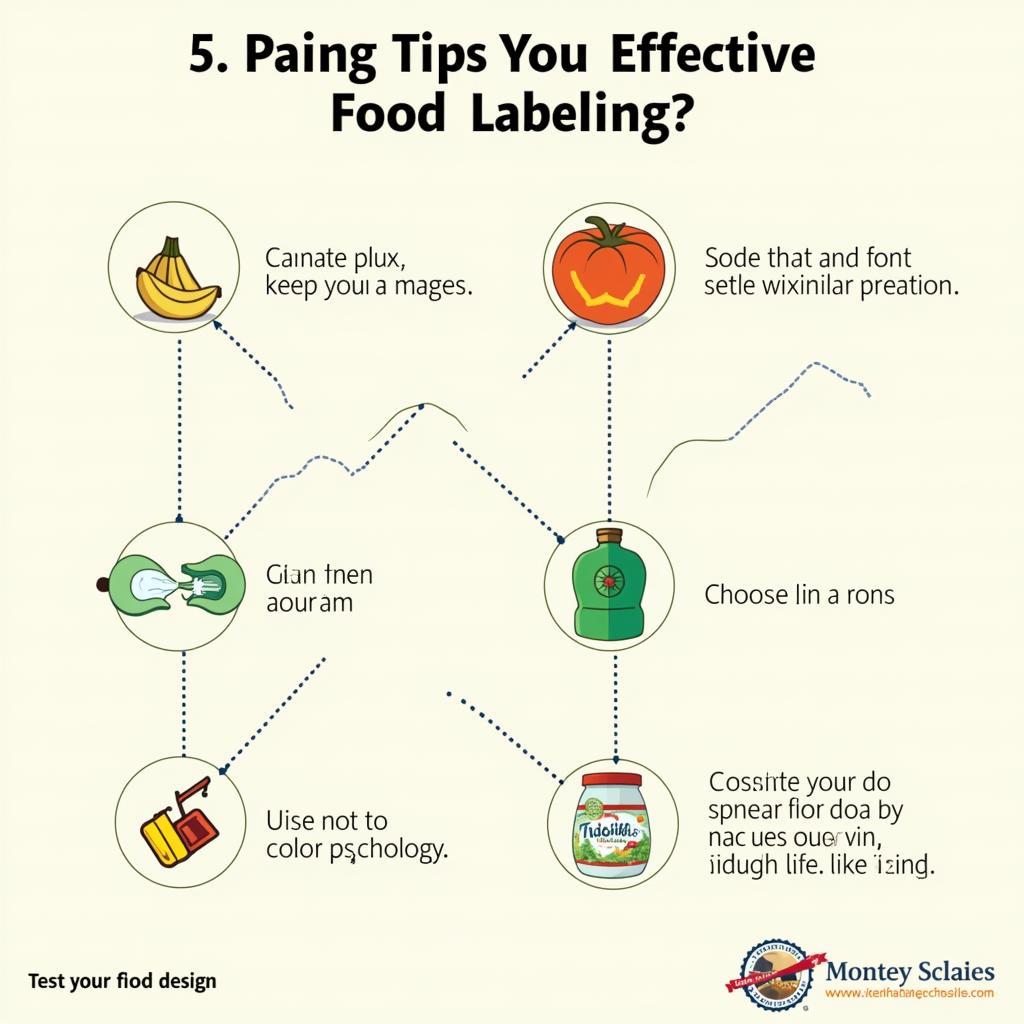Making food labels might seem like a small detail, but it’s a crucial part of presenting your product to the world. Whether you’re a small business owner just starting out or a seasoned food entrepreneur, understanding how to Make Food Labels effectively can significantly impact your brand’s success. This guide dives deep into the art of crafting compelling food labels that not only meet regulatory requirements but also entice customers and build brand loyalty.
Creating a label involves much more than simply slapping on a name and a list of ingredients. It’s about communicating your brand story, highlighting the unique qualities of your product, and ultimately, making a connection with the consumer. From choosing the right materials to navigating the legal landscape, we’ll cover everything you need to know to make food labels that truly stand out.
Understanding Food Label Regulations
Before diving into the creative aspects of label design, it’s crucial to understand the legal requirements. Food labeling regulations are in place to protect consumers and ensure transparency. These regulations vary depending on your location, so research the specific rules applicable to your region. Generally, food labels must include accurate information about ingredients, nutritional values, allergens, and net weight. Failing to comply with these regulations can result in hefty fines and even product recalls. Accurate labeling isn’t just a legal obligation; it’s a fundamental aspect of building trust with your customers.
After the first exciting steps of starting your own small business selling homemade dog food, it’s time to focus on professional presentation with great labeling. Check out our dog food with real ingredients for some initial inspiration.
Designing Your Food Label: Key Elements
A well-designed food label is more than just informative; it’s a powerful marketing tool. Here are some key elements to consider:
- Brand Logo and Name: Your logo and brand name are the cornerstones of your brand identity. Make sure they are prominently displayed on your label.
- Product Name: Choose a clear and concise product name that accurately reflects the contents.
- Net Weight: Clearly state the net weight or volume of your product.
- Ingredient List: List all ingredients in descending order of predominance by weight.
- Nutrition Facts Panel: This panel provides detailed information about the nutritional content of your food.
- Allergen Information: Clearly identify any potential allergens present in your product. This is crucial for consumer safety.
- Country of Origin: State where your product was manufactured or produced.
- Storage Instructions: Provide clear instructions on how to store your product to maintain its quality.
 Essential Design Elements for Effective Food Labels
Essential Design Elements for Effective Food Labels
Beyond these basics, you can elevate your food label with creative design elements that capture the essence of your brand. If you’re interested in learning more about creating a food business catering to specific dietary needs, you might find our food allergy blog helpful.
Choosing the Right Materials and Printing Methods
The materials and printing methods you choose can significantly impact the overall look and feel of your food label. Consider factors such as durability, water resistance, and the type of container your product will be packaged in. Options range from paper labels to more robust synthetic materials. The printing method you choose will depend on your budget and the complexity of your design. Digital printing is often a cost-effective option for smaller runs, while flexographic printing is suitable for larger quantities.
Make Food Labels That Tell Your Story
“Don’t underestimate the power of storytelling in your food labels,” advises Amelia Hernandez, a renowned food packaging consultant. “Connect with your customers on an emotional level by sharing the story behind your product.”
Your label can communicate your brand values, the origin of your ingredients, or even the inspiration behind your recipe. This personal touch can create a deeper connection with your audience and differentiate you from competitors.
Having the right packaging can significantly influence customer perception. Explore our article on food with black packaging for insights into how color can impact your brand.
Tips for Effective Food Labeling
- Keep it Simple: Avoid cluttering your label with too much information. Focus on the essentials and present them clearly.
- Use High-Quality Images: Appetizing visuals can significantly enhance the appeal of your product.
- Choose the Right Font: Select a font that is easy to read and reflects your brand personality.
- Consider Color Psychology: Colors evoke emotions and can influence purchasing decisions.
- Test Your Label Design: Before going into full production, test your label design on your target audience to gather feedback.
“Testing your label design is crucial,” emphasizes David Lee, a veteran food marketer. “It allows you to identify any potential issues and make necessary adjustments before launching your product.”
Make Food Labels: Conclusion
Making effective food labels is a vital aspect of building a successful food business. By understanding the regulatory requirements, focusing on key design elements, and crafting a compelling brand story, you can create labels that not only inform but also inspire. Remember to keep it simple, use high-quality visuals, and always test your design before going to market. By following these guidelines, you can make food labels that truly pop and contribute to the growth of your brand. So, make food labels a priority, and watch your product fly off the shelves!
FAQ
- What is the most important information to include on a food label?
- Are there specific regulations for food labeling in different countries?
- What are some common mistakes to avoid when designing a food label?
- How can I choose the right printing method for my food labels?
- What are some creative ways to tell my brand story on my food label?
- How can I make my food labels stand out from the competition?
- Where can I find more resources on food labeling regulations?
 Key Tips for Effective Food Labeling
Key Tips for Effective Food Labeling
For those interested in providing optimal nutrition for their pets, be sure to check out our guide on healthy food for toy poodles. And if you’re seeking affordable options, we’ve compiled a list of the best budget friendly cat food.
We also have articles on food storage, ingredient sourcing, and label design trends. You can find a wealth of information on our website to further assist you in your food labeling journey.
Need further support? Contact us at Phone Number: 02437655121, Email: minacones@gmail.com or visit us at 3PGH+8R9, ĐT70A, thôn Trung, Bắc Từ Liêm, Hà Nội, Việt Nam. We have a 24/7 customer support team.